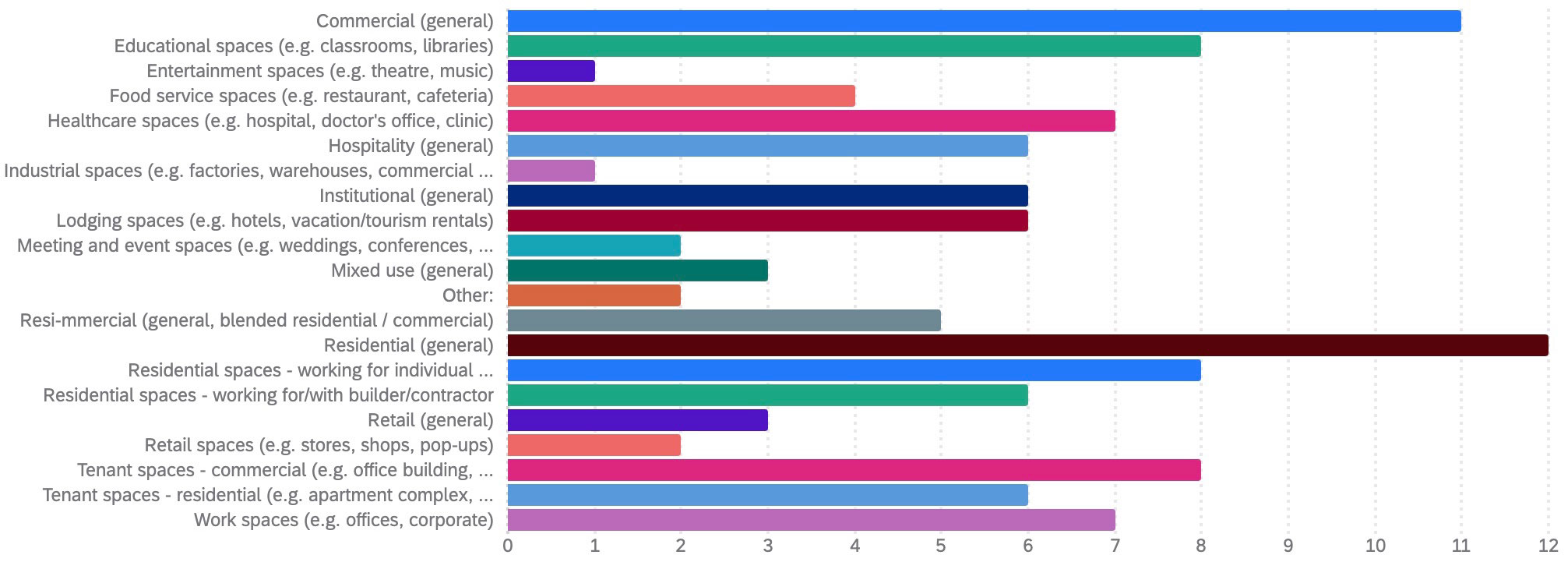
Department of Consumer and Design Sciences
The following data were collected using institutional records and an alumni survey that is administered within 6 months post-graduation. Historical data are provided where available.
The Interior Design program at Auburn University is nationally-recognized and highly competitive with limited admission. Demand for the Interior Design major has been increasing over the last five years and in Fall 2022 were pleased to expand our capacity and accept 50% more students thanks to support from our College administration and professional partners. For students who applied to the major in May 2022, our acceptance rate was 67%; yearly acceptance rates have averaged between 65-80% each year.
High-Impact Practice (HIP) participation is high in all majors across the College of Human Sciences. The most popular College HIPs in 2022 were internships, ePortfolio completion, and participation in Study Abroad. Experiences like these can help students develop essential and transferrable workplace skills such as communication, problem solving and critical thinking. All Interior Design students complete an ePortfolio and required internship, typically in their junior year, and many study abroad in one of the programs offered within our College. One of our most popular program for Interior Design students is a full semester of study at our permanent campus in a Palace commissioned by the Chigi family and designed by Bernini (Ariccia, Italy).
Across the College, internship participation appears to be related to increased success in employment-seeking graduates across all demographics. All Interior Design majors are required to complete one full-time internship of 10 weeks or more, typically completed during the summer of their junior year. Many of our students report completing multiple internships before graduation, some beginning as early as their first summer after acceptance to the major.
Internship quality is a high priority for our program. Overall, in 2022, interns reported being satisfied with their internship experiences and most graduates planned to stay with the company where they had interned. Reports suggest interns are willing to work hard when they know that they are gaining valuable experience and feel that their work matters. The biggest opportunity to improve internship quality seems to be in fit with the workplace culture, which is why it is important for students to consider not only the quality of work and reputation of a company, but also their personal fit with company culture and their specific team.
Interns generally reported being satisfied with their direct supervisor, especially in terms of fair treatment, setting clear expectations, and showing appreciation for the intern’s work. Students who were less satisfied with their experience with their direct supervisor highlighted the importance of giving feedback (positive and negative) and showing appreciation for the intern’s work. Interns who were especially well satisfied with their experience felt that their supervisor mentored them for success.
From those students who reported compensation for internships, the average hourly rate for 2022 was $16.20. Pay ranged from $7.25 to $25.00 per hour and most positions paid $15.00-$20.00 per hour. Few internships were unpaid in 2023.
The average full-time student typically takes approximately 15 credits per semester and can complete the degree program in 4 years, including a 9-credit internship that is usually completed in the Summer of the junior year. Students who complete this CIDA-accredited degree program are eligible to sit for the first part of their professional NCIDQ exam – the IDFX – during their senior year of study. The program works with industry partners to provide every student with an incentive to take the IDFX prior to graduation; we are often able to make the exam cost discounted or free for our students.
Beginning in 2021, our program adopted a new data collection model that provides an enhanced level of detail for what Auburn University calls “first destination outcomes”. These outcomes include information about job placement and enrollment in continuing education, such as graduate school.
To generate the information described below, we rely primarily on information collected by the University. We use an end-of-internship survey to collect additional program-level data and make the information more useful to our students and prospective students. For University-collected data, first destination outcomes were examined at the 6-month post-graduation mark for graduates of each cohort. Data was obtained from graduates’ responses to the Campus Engagement and Experience Survey, the First Destination Survey and First Destination follow-up process. Graduates that reported they were “not seeking” employment or continuing education are not included in College success rate calculations.
In 2021, 36 seniors graduated from the Interior Design program. This class entered the work force in the midst of the COVID-19 pandemic but first destination success rates remained relatively high, with an employment success rate of about 90% and an education success rate of about 95%. The following report presents employment (jobs) and enrollment (continuing education) outcomes for these graduates.
Of those that successfully obtained jobs, full-time employment was the most reported outcome. Overall, continuing education acceptance rates were particularly high for most majors in the College, including Interior Design, but fewer than 10% of Interior Design program graduates report pursuing another degree immediately upon graduation.
Across the college, about 70% of graduates reported that their first job was directly related to their major. The most common area of design practice for Interior Design program graduates is commercial interior design but we also have graduates reporting work in educational, healthcare, hospitality, residential, and retail design each year. Below is a breakdown of the types of projects our students reported working on in 2022:

In addition to tracking areas of professional practice, we also track hourly and salary averages from those students who report compensation. The average hourly rate for 2022 was $16.20. Pay ranged from $7.25 to $25.00 per hour and most positions paid $15.00-$20.00 per hour. The average starting salary in 2022 was $41,333, with most companies offering $48,000-50,000 per year for full time, salaried positions.


Department of Consumer and Design Sciences
308 Spidle Hall
Email Us
334-844-4084